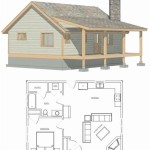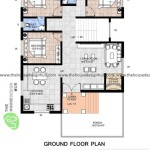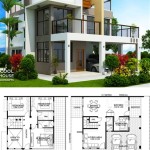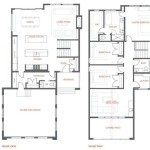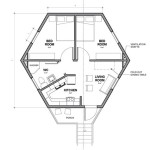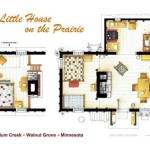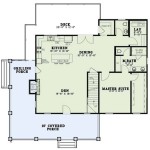4 Bedroom Open Plan House Design: Creating Spacious and Modern Living
Open-plan living has revolutionized modern home design, fostering a sense of spaciousness and connectivity. This design approach is particularly appealing for 4-bedroom houses, where it can create a harmonious flow between living, dining, and kitchen areas, perfect for family interaction and entertaining. This article explores the key considerations and benefits of incorporating an open-plan design into a 4-bedroom house.
Key Advantages of Open-Plan Living
Open-plan layouts offer numerous benefits, including:
- Enhanced natural light penetration throughout the shared spaces.
- Improved ventilation and airflow.
- A greater sense of spaciousness, making even moderately sized homes feel larger.
- Flexibility in furniture arrangement and space utilization.
- Facilitates social interaction and family connection.
Planning Your 4-Bedroom Open-Plan Layout
Careful planning is essential for a successful open-plan design. Consider these key elements:
- Defining Zones: While the space is open, distinct zones for living, dining, and kitchen areas should be established. This can be achieved through furniture placement, flooring changes, or subtle variations in ceiling height.
- Traffic Flow: Ensure a smooth traffic flow throughout the space, minimizing obstructions and creating clear pathways between zones.
- Furniture Selection: Choose furniture that complements the open-plan design, opting for pieces that are proportionate to the space and don't create visual barriers.
Maximizing Natural Light and Ventilation
One of the primary advantages of open-plan design is the ability to maximize natural light and ventilation. This can be achieved through:
- Large windows and strategically placed skylights.
- Glass doors leading to outdoor areas, blurring the lines between indoor and outdoor living.
- High ceilings to promote airflow and create a sense of volume.
Creating Defined Zones within an Open Space
While openness is key, defining distinct zones within the open-plan area is crucial for functionality and visual appeal. This can be accomplished through several design strategies:
- Flooring: Using different flooring materials, such as hardwood in the living area and tiles in the kitchen, can effectively delineate zones.
- Rugs: Strategically placed rugs can anchor furniture groupings and define specific areas within the open space.
- Ceiling Treatments: Changes in ceiling height, beams, or pendant lighting can visually separate different zones.
- Furniture Placement: Carefully arranging furniture can create natural divisions and establish clear pathways.
Kitchen Considerations in an Open-Plan Design
The kitchen becomes a focal point in an open-plan design. Consider these aspects:
- Island Integration: A kitchen island can serve as a visual divider while providing additional workspace and seating.
- Ventilation: Invest in a high-quality ventilation system to prevent cooking odors from permeating the entire space.
- Aesthetics: Ensure the kitchen's design complements the overall aesthetic of the open-plan area.
Integrating the Dining Area Seamlessly
The dining area should seamlessly integrate into the open-plan layout, creating a natural flow between the living and kitchen zones. Consider these design tips:
- Placement: Position the dining table strategically to create a clear dining zone without obstructing traffic flow.
- Lighting: Use pendant lights or a chandelier above the dining table to define the space and create a focal point.
- Furniture Selection: Choose dining furniture that complements the overall style of the open-plan area.
Decorating and Styling Your Open-Plan Space
Decorative elements play a significant role in unifying the open-plan space. Consider these styling tips:
- Color Palette: Use a cohesive color palette throughout the open-plan area to create a sense of harmony.
- Textiles: Incorporate textiles such as cushions, throws, and curtains to add warmth and texture.
- Artwork and Accessories: Strategically placed artwork and accessories can enhance the visual appeal and personalize the space.
Privacy Considerations in Open-Plan Living
While open-plan living promotes connectivity, it's essential to consider privacy needs. This can be addressed by:
- Strategic Furniture Placement: Use furniture to create subtle visual barriers between zones.
- Partial Walls or Room Dividers: Consider incorporating partial walls or room dividers to define spaces without completely closing them off.
- Pocket Doors: Install pocket doors to create flexibility, allowing for open living or separation when needed.
By carefully considering these aspects, homeowners can create a 4-bedroom open-plan house design that maximizes space, light, and functionality, while promoting a sense of connection and modern living.

Dreamy 4 Bedroom With Soaring Ceilings Open Plan House Plans Ranch

4 Bedroom House Plans One Story Open Floor

4 Bedroom Ranch Style House Plan With Outdoor Kitchen

Open Floor Plans Build A Home With Smart Layout Blog Dreamhomesource Com

4 Bedroom House Plan Examples

4 Bedroom Open Plan Living 229 M2 Size Home Floor House Plans Architectural Ranch Style

The 11 Best New House Designs With Open Floor Plans Houseplans Blog Com

Open Concept Ranch Floor Plans Houseplans Blog Com
Trending Ranch Style House Plans With Open Floor Blog Eplans Com

House Plan 4 Bedrooms 1 Bathrooms 3314 Drummond Plans

